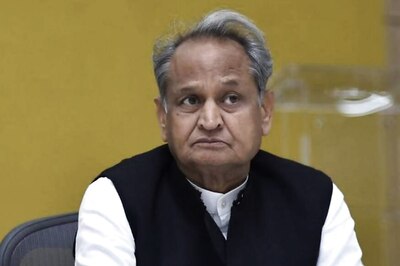
views
New Delhi: A continued and deepening economic slowdown has put India’s finances in a churn and the country could be facing a massive Rs 2 lakh crore shortfall in gross tax revenues this fiscal. The economic engine began slowing down from the second half of the last fiscal year and the GDP growth rate has been at multi-year lows in each quarter since then. Tax collections have already been declining vis-a-vis Budget targets since the beginning of the fiscal year. But now that the government’s own internal estimate has pegged this shortfall at a massive Rs 2 lakh crore, this could lead to slippage from the fiscal deficit target of 3.3% of GDP.
Besides, states’ finances could also be impacted as the Centre would consequentially have less money, than thought earlier, to share with them. The government may also be compelled to cut down on capital expenditure and increase its borrowings, further raising chances of a fiscal slippage.
A worrying slowdown in India’s economic growth has been evident for some quarters now with GDP growth rate falling to a 25-quarter low of 5% in April-June 2019. Several multilateral agencies, including the World Bank and IMF, have lowered their growth forecast for India for the full year and now, the RBI has also revised it down sharply — to 6.1% in FY20 from 7% earlier. In this scenario, the expected revenue shortfall would be a major headache for the government.
The central government earns revenue through tax and non-tax levies. Under taxes, it collects levies from: sale of goods and services (GST, excise and custom duties), corporate profits and personal income. And its non-tax sources of income include disinvestment and dividends from public sector units. Almost 74 paise of every rupee the government earns come from taxes and a shortfall here burns a big hole in the country’s finances. Some of this shortfall can be made up by an expanded disinvestment programme, for example, but would not be enough to plug the entire gap between target and actual tax collections.
A piece in Business Standard newspaper quotes an unnamed government official saying gross revenue for 2019-20 may fall short by about Rs 2 lakh crore. Earlier, analysts at brokerage Motilal Oswal had calculated the expected tax revenues for the full fiscal year, based on collection trends for the first five months (April-August). And they had pointed out weak economic growth would lead to lower-than-expected government receipts. Compared to the 2018-19 provisional estimates, the government had budgeted for about a 25% year-on-year growth in total receipts this fiscal.
“Based on actual data available for the first five months of FY20 (Apr-Aug’19), our estimates suggest that there could be a net shortfall of Rs 1.4 trillion (Rs 1.4 lakh crore) in taxes, which would be partly offset by higher dividends and divestments. The actual shortfall, thus, in total receipts could be about Rs 620 billion in FY20.” The estimate by these analysts had pegged the gross tax revenue collection falling short by over Rs 2.1 lakh crore.
Tax shortfall this fiscal is on account of multiple reasons: there is a visible slowdown in rural as well as urban consumption. When people buy fewer number of cars, less shampoo, fewer number of biscuit packs and less petrol/diesel because of tight household budgets, the government’s tax collection from these goods drops too. While there has been no reduction in personal income tax rates till now, the Finance Minister had recently announced a massive cut in headline corporate tax rates. This latter move is obviously a big drain on overall tax collections too.
Analysts at Kotak Institutional Equities have noted that the shortfall arising from corporate tax cuts, lower run rate of income tax and GST are expected to only partly be offset by higher RBI dividend and lower government expenditure this fiscal. “We believe the fiscal slippage could amount to ~0.4% of GDP. Higher disinvestment proceeds, interim RBI dividend and PSU dividends if materialised could offset part of the shortfall. However, we do not expect any clarity on these contours before the beginning of 4QFY20 (January-March 2020).”
The Motilal analysts noted that with lower-than-budgeted receipts, the government would be left with only two options — either to adjust spending to achieve the annual fiscal deficit target or to raise additional borrowings which would automatically mean the deficit target is breached.
“It is important to note that while actual receipts have been lower than budgeted during the past many years, the government has stuck to its fiscal deficit targets in most years by resorting to cuts in spends during the last quarter of the financial year. In the last three years, the government has also pushed its food subsidy burden by asking the Food Corporation of India (FCI) to borrow directly. This, in effect, has helped the Central government to show it meeting its deficit target; however, public sector borrowings have remained at higher levels. We would not be surprised if similar accounting is used by the government this year too, in order to stick to its target fiscal deficit of 3.3% of GDP for FY20,” these analysts said.
Whether the government again resorts to “creative accounting” to stick to a stiff deficit target remains to be seen. Meanwhile, salaried taxpayers have now begun demanding some relief in personal income tax rates as corporate tax has already been slashed substantially. For a government struggling to raise revenues, this may be a tough choice between populism and prudence.
(Author is a senior journalist. Views are personal)




















Comments
0 comment